Publication & Articles
Force Majeure in the Age of Coronavirus

Abstract
The human mankind, possibly before November 2019 was not even aware about the word called “Corona”. It was mostly in the month of December 2019 that this word “a novel corona virus called SARS-CoV-2” started emerging. It took few weeks before the world slowly realized the true meaning, extent and magnitude of this disease called “Corona-virus”.
The Coronavirus disease, for the first time, mostly around December 2019 first spread in China. After it started spreading, the entire world took time to understand its severity. The World Health Organisation first classified the outbreak as pandemic because of its geographical spread.
Introduction
Within few months after its outbreak, it started impacting economies throughout the world. Supply chains got severely have been radically dislocated and the rights and obligations of parties under agreements started getting affected.
This crisis would not have affected this badly if we were not over depended upon China at least with regard to pharmaceutical industry, automobile parts, renewable sector and the electronic gadgets. At least now we realise that it is because of over dependency upon China, it is extremely difficult to wipe out China from import and export sector.
Statistics reveal that Indian pharmaceutical companies rely on China for approximately 70% of API (pharmaceutical ingredient) requirement. There is a upward trepidation if this disease continues to last for another one year manufacturing facilities of pharmaceutical companies in India will be affected enormously. The prices of drugs and medicines have already started soaring.
India is over dependent on suppliers in China for automobile parts and components. Such over dependency is also not a good sign. There is a serious apprehension, China, Japan, Thailand will face serious restrictions from ministry about import export of businesses.
In addition to it, the most important sector i.e. the renewable sector will also be affected. Records reveal that Indian Solar Power producers congregate not less than 80% of their requirements for solar cells from China. By now, in many parts of India, solar power producers are already struggling.
Concept of Force Majeure
Black’s Law Dictionary defines the term Force Majeure as a “superior force’ – an event or effect that can be neither anticipated nor controlled.
Collins Dictionary defines this event as an unexpected and disruptive event that may operate to excuse a party from a contract.
Thus, if we interpret the definition of Force Majeure, it will reveal those events, which are normally outside the control of the parties, prevents one or both the parties from performing their contractual obligations. The term “force majeure” varies significantly under civil law and common law as in most of the common law countries, like India, the concept of “force majeure” is not codified.
The English Law has evolved from an English Case where we will find that the English Courts had held even though there was no specific provision in the contract it was implied that the contract would be frustrate when the subject matter of the agreement has itself become impossible of being executed. Few years later, this principle evolved as the “Doctrine of Implied Condition”.
Under Indian Law, one can find the manifestation of Force Majeure in section 32 and 56 of the Indian Contract Act, 1872.
“Section 32: Enforcement of Contracts contingent on an event happening – Contingent contracts to do or not to do anything if an uncertain future event happens, cannot be enforced by law unless and until that event has happened. If the event becomes impossible, such contracts become void.”
“Section 56: Agreement to do impossible act – An agreement to do an act impossible in itself is void.
Contract to do act afterwards becoming impossible or unlawful. A contract to do an act which, after the contract made, becomes impossible or, by reason of some event which the promisor could not prevent, unlawful, becomes void when the act becomes impossible or unlawful.
Force Majeure (S.56 of the Indian Contract Act, 1872.): A force majeure clause relieves one or both parties from liability to perform contract obligations when performance is prevented by an event or circumstance beyond the parties’ control.
However, one must bear in mind that the doctrine of impossibility has no applicability in lease related agreements and/or other similar kind of contracts. In one of the case the Supreme Court has held that the law on impossibility of performance will not apply to lease related contracts and/or agreements. The Court had also identified that section 56 has no applicability in cases of completed transfer thereby drawing a thin line of distinction between “completed conveyance” and an “executory contract”. The Supreme Court had opined that since lease being a completed conveyance, it cannot be invoked to claim exemption or suspension or any kind of waiver from payment of rent. The Hon’ble Supreme Court had reiterated this principle in few more cases.
The last two months have seen quite a number of tenancy related cases coming up in Delhi High Courts. We have seen how the tenants are running from pillar to post praying for a complete set off or waiver. In some cases, the tenants have beseeched the Court to suspend the rent until normalcy resumes. Reliance was placed in a noted case but the Court held unless the lessee avoids the lease, the obligation contained in the agreement cannot be suspended or waived. The High Court came to a finding until there is a complete annihilation of the premises, force majeure clause under section 56 cannot be enforced. Thus, the mere temporary non use of the property due to this Covid 19 cannot entitle the tenant for non payment of rend and thus the tenant must have to make payments of rent to the lessor. The Court has also held in the absence of any contractual covenants, the statutory laws of the Property Act will prevail in cases of disputes pertaining to leases and tenancies.
Literally speaking, the doctrine of frustration essentially speaks about the concept “impossibility”. If the parties can establish due to change in circumstances, the performance of the contract becomes practically impossible, legally the parties can be said to be absolved from their commitments. This is because the law does not permit any person to perform an act of impossibility.
Ingredients of Force Majeure
Of course, the nature and character varies from case to case, from characteristics to characteristics but if I am told to point out the basic features of Force Majeure, I would say that the following would be the essential features of force majeure:-
1. The contracting party has principally failed to perform its task because of events, which were beyond his control.
2. The unexpected event made contractual performance impracticable.
3. The party could not have been expected to take any steps to avoid or mitigate the event or its consequences.
4. The contractual party who was a party to the agreement did not have any malicious intention to dishonor the agreement.
The landmark case of Energy Watchdog is very much useful inasmuch as this case ubiquitously specifies if there is an express or an implied clause in the contract, which may lead to frustration of contract that case should be dealt with as per section 32 of the Indian Contract Act. In some cases, we may also find the incident or the event or collective events to fall outside and the scope of the contract or that such incidents are not explicated in the contract. Such types of cases are to be governed as per section 56 of the Indian Contract Act.
Further, the Supreme Court, time and again has gone for widest range of interpretation while interpreting the word “impossibility” under the Contract Act. The Hon’ble Court has said that the word “impossibility” must not be confined to physical impossibility but should also be given a practical meaning. Thus, in the situation of “impracticability”, the Honorable Supreme Court has also leaned in favor of force majeure.
Often, the following points maybe found useful dealing while dealing with force majeure clause:-
1. The Court interpreted the word “impossible” under section 56 of the Act and said that impossibility is not just physical or literal impossibility but also impracticability.
2. Where there is no fixed time limit in the contract, delay in performance would automatically frustrate the contract.
3. If the contract becomes impossible to perform because of the ongoing events, the contract becomes void on its own and the obligations on the parties is discharged.
4. Further, the Apex Court, in one of the case has also held that temporary impossibility in performance of obligations under a contract or an agreement does not automatically discharge the contract, unless and until time is the essence of the contract.
5. Whether there are any other special or additional contracts to the main contracts.
It is pertinent to note generally Force Majeure clauses in contracts are incorporated to temporarily claim suspension of obligations by either of the parties under the contract during the continuation of the event that has made performing the obligations altogether impossible or nearly impractical for reasons beyond control. One must understand force majeure does not apply as a matter of rule or cannot be applied as straight jacket formula in all cases.
The Honorable Delhi Court held that lock down because of Covid-19 is in the nature of Force Majeure and stopped Vedanta from invoking bank guarantee as performance could not be completed because it involved overseas travel.
While, in another case, the Honorable Bombay High Court refused to pay heed to the petitioners for various reasons like:-
1. As per the lock-down guidelines, distribution of steel was essential service and that there were no restrictions imposed on its movement.
2. Ad-interim reliefs such as letter of credit were also considered to be an independent transaction.
3. The court also observed that the wordings of the clause implied that it was only applicable to the exporters.
The parameters which are to be considered when adjudicating cases for suspension of rent have been elaborately classified by the Delhi High Court.
Is COVID-19 an “Act of God”?
In order to determine whether Covid-19 can be termed as Force Majeure event, the primary law must be examined. The event or events of that can be covered under the force majeure clause must be expressly and clearly mentioned in the contract. The failure to discharge the obligations under the agreement will depend substantially on the terms, the language and the intent of the overall contract. Whenever the disputes arise with respect to the scope of such clause, the Courts are likely to apply the common principles of interpretation to such contracts. Unless therefore the incident or the collective events fall within the definition of ‘force majeure’ clause, the courts may not accept such event so as to trigger the consequences of the ‘force majeure’ clause.
However, whether or not an individual would be entitled to be exempted from discharging its obligations under this precarious situation would have to be decided only after going through the totality of the agreement and the terms of the contract. While studying the agreement and/or trying to assess whether or not the events fall within the definition of “force majeure”, one should assess the following:-
1. Whether the force majeure event in the contract expressly includes a ‘pandemic’. If the agreement expressly contains the word ‘pandemic’ as force majeure in such an instance, the inclusion of ‘pandemic’ to the list of events of a ‘force majeure’ clause would make it clear that the outbreak of Covid-19 would trigger a force majeure clause; or
2. If the given force majeure clause encompasses circumstances beyond the reasonable control of the parties, in such an instance, the ‘force majeure’ clause can only be enforced if the factual circumstances of the case cumulatively show that those are beyond reasonable control of the affected party.
Apart from this, a party’s entitlement to the benefit of force majeure clause would depend on the following factors:
1. In most of the commercial agreements, it is ordinarily followed that the party invoking the force majeure clause should intimate the other party within a reasonable time regarding the incident, which prompted the affected party to invoke the force majeure clause. In many cases we find the party apprising the other party with the impact and duration of effects resulting from the said event.
2. There is a possibility that parties have an obligation to mitigate damages.
3. Wide-ranging implications of force majeure event should also be considered. For instance, the performance of the agreement may remain standstill temporarily till the time the event continues. However, the parties may negotiate between themselves and may look to modify the terms of the agreement by amending certain portion of the agreement if the force majeure prolongs for specific time-frame.
4. Documentary evidences or circumstantial evidences would play an important role while adjudicating the case. Such evidences may include (i) national and state government notice and guideline imposing restriction of trade, (ii) articles and/or information relating to COVID-19 outbreak, (iii) cargo booking and freight agency agreement, and (iv) rejected visa application.
A Division Bench of the Delhi High Court recently in one case while following the dicta laid down by the Supreme Court in Energy Watchdog case observed that if unforeseen events occur during the performance of the contract, thereby making it impossible of performance, uprooting the fundamental basis of the contract, then such contract need not be performed since insisting upon the performance in such circumstances would be unjust.
By reason of the aforesaid facts, it is essential that the corporate hubs and individual parties to the agreement are extremely vigilant to protect their arrangements from the global-economic slowdown that may be difficult to avoid in the present circumstances.
In either case, the following actions may be taken into consideration while entering into commercial contracts:-
i) One should first assess the totality of the agreement to find out the rights and duties of the parties with respect to clauses of force majeure, territorial jurisdiction and the termination clause if any;
ii) Second whether the ‘Force Majeure’ clause is temporary and/or prevents a party from performing under the agreement;
iii) Third, whether the party who wishes to invoke the force majeure clause has served any intimation notice in the form of notice or legal notice to the other party;
iv) Fourth, whether the other party has responded to such notice by way of reply letter;
v) Fifth, whether the agreement (mother agreement) has been subsequently amended or repealed by way of fresh terms;
vi) Sixth, the concerned affected party must promptly take steps to record the steps it is taking to prevent or mitigate the impact of the Covid-19 outbreak on its ability to perform its obligations under the contract.
1) Black’s Law Dictionary, 2nd Edition, Page 143.
2) Force Majeure, Dictionary.com, https://www.dictionary.com/browse/force-majeure.
3) Tailor v. Cadwell, (1853)3 B&S 826 and Krell v. Henry, (1903) 2KB 740.
4) Section 32, Indian Contract Act, 1872,
View PDF
5) Section 56, Indian Contract Act, 1872,
View PDF
6) Raja Dhruv Dev Chand v. Raja Harmohinder Singh & Anr ,1968 SC 1024.
7) T. Lakshmipathi and ors v. P.Nithyananda Reddy and Ors, (2003) 5 SCC 150 and Alopi Prashad v. Union of India ,(1975) 2SCC 633.
8) Sangeea Batra v. M/s. VND Foods and Ors, (2015) 3 DLT (Cri) 422.
9) Energy Watchdog v. Central Electricity Regulatory Commission, (2017) 14 SCC 80.
10) Mugneeram Bangur & Co. v. Gurubachan Singh, AIR 1965 SC 1523.
11) Halliburton Offshore Services v. Vedanta Limited, 2020 SCC OnLine Del 542.
12) Standard Retail Private Limited v. M/s. G.S. Global Corp & Ors , Commercial Arbitration Petition (L) No. 404 of 2020.
13) Ramanand & Ors. v. Dr. Girish Soni & Anr., RC Rev. 447 of 2017, decided on 21st May, 2020.
14) TGV Projects and Investments Pvt. Ltd v. National Highways Authority of India, 2019 (173) DRJ 717.
The Judiciary of India is an independent body and is separate from the Executive and Legislative bodies of the Indian Government. The judicial system of India is stratified into various levels. At the apex is the Supreme Court, which is followed by High Courts at the state level, District Courts at the district level and Lok Adalats at the Village and Panchayat Level. The judiciary of India takes care of maintenance of law and order in the country along with solving problems related to civil and criminal offences.
The judiciary system that is followed in India is based on the British Legal System that was prevalent in the country during pre-independence era. Very few amendments have been made in the judicial system of the country.
SUPREME COURT IN INDIA
The Supreme Court is the highest judicial body in India. The Supreme Court came into power on 28th January 1950; just two days after the Constitution of India came to effect. In the initial stages, it had its office in a part of the Parliament House. The Supreme Court is endowed with many duties and responsibilities. The biggest responsibility is that it is the highest court of appeal and is also the protector of the Constitution in the country.
The Chief Justice of India and 25 other judges make up the Supreme Court of India. The appointments are done directly by the President of India. There are certain criteria that have to be fulfilled by the advocates to become a judge of the Supreme Court. Being a citizen of India is one of the most important criteria. Apart from this, the person has to have an experience of minimum five years as a judge in the High Court or any other two courts one after another. He should also be a prominent jurist as per the President of the country, so that he can take up responsibilities well. The Chief Justice is also consulted at the time of appointment of the judges in the Supreme Court.
The Judges of the Supreme Court are free to exercise their power as and when required. The process of removal of the Supreme Court judges is quite an interesting but lengthy process. An order from the President is mandatory in case of removal of the judges. A two-thirds majority has to be obtained from both the houses for the removal of the judges.
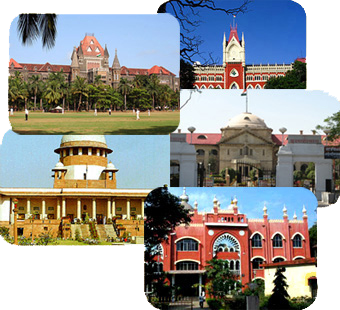
The jurisdiction of the Supreme Court is divided into original jurisdiction, advisory jurisdiction and appellate jurisdiction. Original jurisdiction is required when there is a dispute between the Government and the states of India or any one state of India. The Supreme Court can also enforce fundamental Rights according to the Article 32 of the Constitution of India.
The appellate jurisdiction is mentioned in Articles 132(1), 133(1) or 134 of the Constitution. The decision of the High Court can be questioned in the Supreme Court of the country. One can appeal to the Supreme Court, if he or she is not satisfied with the decision of the High Court. The Supreme Court has the provision of accepting or rejecting the case at its own discretion. There are also provisions of pardoning criminals and canceling their lifetime imprisonment or death sentence by the Supreme Court.
Apart from the original and appellate jurisdiction of the Supreme Court, there is an advisory jurisdiction that needs special mention. There are many cases that are directly referred by the President of India and the Supreme Court has to look into those matters. This provision is mentioned in Article 143 of the Indian Constitution.
The Supreme Court in India acts as an independent body and is free from any outer control. The contempt of law court in India is a punishable offence and the Supreme Court takes care of this immaculately.
HIGH COURTS IN INDIA:
There are High Courts in almost all the states of India and the Union Territories. The High Courts work under the Supreme Court in the country. These courts are vested with lot of power. They decide on both civil as well as criminal cases. Most of the cases that are handled by the High Courts of the country are passed on from the district or lower courts.
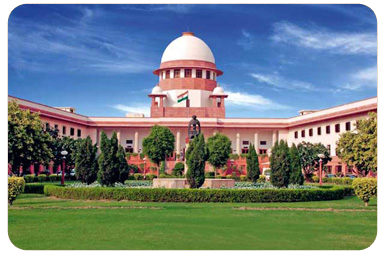
The judges of the High Courts are appointed by the President of India, in consultation with the Chief justice of India and the Governor of the state. The Chief Justice heads each of the High Courts in India. The numbers of judges vary from one court to other depending on the area that the High Court covers and the number of cases that it handles. There are also High Courts that serve more than one Indian state or Union Territory. Each of these courts have original and appellate jurisdiction under them. Summons can also be issued by the High Court. Revenue matters are dealt by original jurisdiction, while an eminent jury handles original criminal cases.
Established in the year 1862, the Calcutta High Court is the oldest court in India. Apart from this, there are 18 total High Courts in the country, some of which are Bombay High Court, Delhi High Court, Chattisgarh High Court, Gujarat High Court, Jharkhand High Court, Madras High Court, Patna High Court and Sikkim High Court.
The Constitution of India
The Constitution of India was enacted on 26th of January, 1950. The Constituent Assembly of India drafted the nation's Constitution.
Being drafted on 26th of November, 1949, the Indian Constitution laid the foundations for establishment of the Democratic Republic of I India. India.
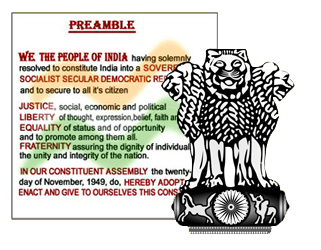
The Constitution of India was drafted over a period of 2 years, 11 months and 17 days. The members of Constituent Assembly of India met for the first time in the year 1946 on December 9. The next meeting of the Assembly took place on August 14th, 1947 for the dominion of India in which the proposal of forming various committees was presented. Such committees include Committee on Fundamental Rights, the Union Powers Committee and Union ConstitutionCommittee. One of the unique factors of this meeting was that the Assembly gathered as the Sovereign Constituent Assembly of India.
On 29th August, 1947 a Drafting Committee, with Dr. Ambedkar as the Chairman, was formed on the basis of the various reports submitted by the previous committees. It was in the year 1948 that a Draft Constitutionincluding a range of proposals was formed by the concerned committee. The Constituent Assembly of India held two meetings in February 1948 and October 1949 to go through the clauses of the Draft. Finally, from 14th to 26th of November, 1949 the Constituent Assembly analyzed each and every provision of the Draft. The then President of the Constituent Assembly of India signed the Draft on November 26th, 1949.
Today, there are 12 Schedules and 395 Articles in the Constitution of India. Amendments have been made to the Constitution time and again as per the need of the hour. Till 2006, there have been 94 Amendments made to the constitution.
A) CONSTITUENT ASSEMBLY
The Constituent Assembly of India was formed by the elected members of the provincial assemblies of the country. Presided over by Dr. Sachidanand Sinha for the first time, the Indian Constituent Assembly played the most important role in creating the Constitution of India. After Dr. Sinha, Dr. Rajendra Prasad became the President of the Assembly. Comprising over 30 schedule class members, the Constituent Assembly also included sections of Christians, Anglo-Indians and Minority Community. Harendra Coomar Mookerjee, being the Minority Community Chairman, also successfully worked for the Christians. While H P Modi was the representative of the Parsi community, Frank Anthony headed the Anglo-Indian section of the country in the Constituent Assembly.
Some of the prominent female personalities of the Constituent Assembly were Vijaylakshmi Pandit and Sarojini Naidu. From Shyama Prasad Mukherjee, B N Rau and Maulana Abdul Kalam Azad to K M Munshi, Sardar Patel and Alladi Krishnaswami Aiyer, each one had a major contribution towards the present form of the Constituent Assembly.
B) PREAMBLE
The Preamble is one of the most significant parts of the Constitution of India. Focusing on the core objective of the Indian Constitution, the Preamble includes the following:
1) Equality - which connotes equal opportunity for one and all
2) Justice - which means fair judgment in the fields of politics, society and economy
3) Fraternity - which works towards keeping the integrity and strength of the country intact along with special stress on individual dignity
4) Liberty - which assures every citizen of India the freedom of speech and expression, religious independence and choice of going by one's own belief
The Preamble, as it is presented in the Constitution of India, is mentioned below: "WE, THE PEOPLE OF INDIA, having solemnly resolved to constitute India into a SOVEREIGN SOCIALIST SECULAR DEMOCRATIC REPUBLIC and to secure to all its citizens: JUSTICE, social, economic and political; LIBERTY of thought, expression, belief, faith and worship; EQUALITY of status and of opportunity; and to promote among them all FRATERNITY assuring the dignity of the individual and the unity and integrity of the Nation;
IN OUR CONSTITUENT ASSEMBLY this twenty-sixth day of November, 1949, do HEREBY ADOPT, ENACT AND GIVE TO OURSELVES THIS CONSTITUTION."
C) PARTS OF THE CONSTITUTION
The Constitution of India covers a total of 395 Articles in 22 parts. The parts of the Indian Constitution are mentioned below:
Part I - The Union and its Territory
Part II - Citizenship
Part III - Fundamental Rights
Part IV - Directive Principles of State Policy
Part IVA - Fundamental Duties
Part VI - The States
Part VII - The States in Part B of the First SchedulePart VIII - The Union Territories
Part IX - Panchayats
Part IXA - Municipalities
Part X - The Scheduled and Tribal Areas
Part XI - Relations Between The Union and The States
Part XII - Finance, Property, Contracts and Suits
Part XIII - Trade, Commerce and Intercourse within The Territory of Indi
Part XIV - Services Under The Union and The States
Part XV - Elections
Part XVI - Special Provisions Relating to Certain Classes
Part XVII - Official Language
Part XVIII - Emergency Provisions
Part XIX - Miscellaneous
Part XX - Amendment of the Constitution
Part XXI - Temporary, Transitional and Special Provisions
Part XXII - Short Title, Commencement, Authoritative Text in Hindi and Repeals
The Parliamentary form of Government of India was first introduced by the Constitution of the nation. Consisting of the President the Parliament of India has two Houses namely Lok Sabha and Rajya Sabha. The President leads the Executive of the Union as the Constitutional head. The Prime Minister heads the Council of Ministers as per the Article 74(1) of the Indian Constitution. The 7th Schedule of the Constitution of India indicates that the legislative powers are shared by both the State Legislatures and the Parliament of India.
D) SCHEDULES TO INDIAN CONSTITUTION
Schedules to the Constitution of India can be added through the amendments to it. There are twelve schedules to Constitution of India, which are effective at present, are given below:
First Schedule: This schedule is about the States and Union Territories of India.
Second Schedule: In this Schedule, provisions made to the President and the Governors of States, Speaker and the Deputy Speaker of the House of the People, the Chairman and the Deputy Chairman of the Council of States, the Speaker and the Deputy Speaker of the Legislative Assembly, the Chairman and the Deputy Chairman of the Legislative Council of a State, the Judges of the Supreme Court and of the High Courts and the Comptroller and Auditor-General of India.
Third Schedule: Forms of Oaths or Affirmations are mentioned in this Schedule.
Fourth Schedule: This Schedule specifies the allocation of seats in the Council of States.
Fifth Schedule: Provisions as to the Administration and Control of Scheduled Areas and Scheduled Tribes are mentioned in this Schedule. The amendment of the schedule is also included in the Part D of the Schedule.
Sixth Schedule: This Schedule deals with the provisions as to the Administration of Tribal Areas in the States of Assam, Meghalaya, Tripura and Mizoram.
Seventh Schedule: The List I or the Union List, List II or the State List and List III or the Concurrent List are included in this Schedule.
Eighth Schedule: The 22 languages selected as the official languages of India are mentioned in this Schedule.
Ninth Schedule: Validation of certain Acts and Regulations is dealt with in this Schedule
Tenth Schedule: Provisions as to disqualification on ground of defection for the Members of Parliament and Members of the State Legislatures are mentioned in this Schedule.
Eleventh Schedule: This Schedule talks about the powers, authority and responsibilities of Panchayats
Twelfth Schedule: Powers, authority and responsibilities of Municipalities are defined in this Schedule
The Judiciary of India is an independent body and is separate from the Executive and Legislative bodies of the Indian Government. The judicial system of India is stratified into various levels. At the apex is the Supreme Court, which is followed by High Courts at the state level, District Courts at the district level and Lok Adalats at the Village and Panchayat Level. The judiciary of India takes care of maintenance of law and order in the country along with solving problems related to civil and criminal offences.
The judiciary system that is followed in India is based on the British Legal System that was prevalent in the country during pre-independence era. Very few amendments have been made in the judicial system of the country.
SUPREME COURT IN INDIA
The Supreme Court is the highest judicial body in India. The Supreme Court came into power on 28th January 1950; just two days after the Constitution of India came to effect. In the initial stages, it had its office in a part of the Parliament House. The Supreme Court is endowed with many duties and responsibilities. The biggest responsibility is that it is the highest court of appeal and is also the protector of the Constitution in the country.
The Chief Justice of India and 25 other judges make up the Supreme Court of India. The appointments are done directly by the President of India. There are certain criteria that have to be fulfilled by the advocates to become a judge of the Supreme Court. Being a citizen of India is one of the most important criteria. Apart from this, the person has to have an experience of minimum five years as a judge in the High Court or any other two courts one after another. He should also be a prominent jurist as per the President of the country, so that he can take up responsibilities well. The Chief Justice is also consulted at the time of appointment of the judges in the Supreme Court.
The Judges of the Supreme Court are free to exercise their power as and when required. The process of removal of the Supreme Court judges is quite an interesting but lengthy process. An order from the President is mandatory in case of removal of the judges. A two-thirds majority has to be obtained from both the houses for the removal of the judges.

The jurisdiction of the Supreme Court is divided into original jurisdiction, advisory jurisdiction and appellate jurisdiction. Original jurisdiction is required when there is a dispute between the Government and the states of India or any one state of India. The Supreme Court can also enforce fundamental Rights according to the Article 32 of the Constitution of India.
The appellate jurisdiction is mentioned in Articles 132(1), 133(1) or 134 of the Constitution. The decision of the High Court can be questioned in the Supreme Court of the country. One can appeal to the Supreme Court, if he or she is not satisfied with the decision of the High Court. The Supreme Court has the provision of accepting or rejecting the case at its own discretion. There are also provisions of pardoning criminals and canceling their lifetime imprisonment or death sentence by the Supreme Court.
Apart from the original and appellate jurisdiction of the Supreme Court, there is an advisory jurisdiction that needs special mention. There are many cases that are directly referred by the President of India and the Supreme Court has to look into those matters. This provision is mentioned in Article 143 of the Indian Constitution.
The Supreme Court in India acts as an independent body and is free from any outer control. The contempt of law court in India is a punishable offence and the Supreme Court takes care of this immaculately.
HIGH COURTS IN INDIA:
There are High Courts in almost all the states of India and the Union Territories. The High Courts work under the Supreme Court in the country. These courts are vested with lot of power. They decide on both civil as well as criminal cases. Most of the cases that are handled by the High Courts of the country are passed on from the district or lower courts.

The judges of the High Courts are appointed by the President of India, in consultation with the Chief justice of India and the Governor of the state. The Chief Justice heads each of the High Courts in India. The numbers of judges vary from one court to other depending on the area that the High Court covers and the number of cases that it handles. There are also High Courts that serve more than one Indian state or Union Territory. Each of these courts have original and appellate jurisdiction under them. Summons can also be issued by the High Court. Revenue matters are dealt by original jurisdiction, while an eminent jury handles original criminal cases.
Established in the year 1862, the Calcutta High Court is the oldest court in India. Apart from this, there are 18 total High Courts in the country, some of which are Bombay High Court, Delhi High Court, Chattisgarh High Court, Gujarat High Court, Jharkhand High Court, Madras High Court, Patna High Court and Sikkim High Court.
India is a Democratic. Secular and a Socialist Republic. The rule of law governs our country. 'Equality before law and 'Equal protection of law are the most fundamental right conferred on its citizens. We have a lengthy constitution and some other wonderful laws. Independence of judiciary and highly qualified bureaucrats are the need of the hour. In the present situation, many just exist on paper. The question is about our compliance with the Rule of Law. Rules of law contains three principles or it has three meanings as stated below:
1. Supremacy of Law
2. Equality before law
3. Predominance of Legal Spirit The doctrine of Rule of Law has been adopted in Indian Constitution. The ideals of the Constitution, justice, liberty and equality are enshrined (embodied) in the preamble.
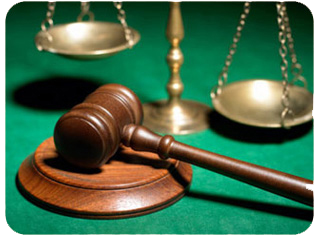
The Constitution of India has been made the supreme law of the country and other laws are required to be in conformity with the Constitution. Any law which is found in violation of any provision of the Constitution is declared invalid. In india, the meaning of rule of law has been much expanded. It is regarded as a part of the basic structure of the Constitution and, therefore, it cannot be abrogated or destroyed even by Parliament. It is also regarded as a part of natural justice. In Keshavanda Bharti vs. State of Kerala (1973) The Supreme Court enunciated the rule of law as one of the most important aspects of the doctrine of basic structure. In Menaka Gandhi vs. Union of India, AIR 1978 SC 597 The Supreme Court declared that Article 14 strikes against arbitrariness. How many people respect or pay heed to this fundamental principle? In our country, there are many innocent people who are held guilty only because of the malicious acts of a few hypocrites. We know of a number of members of legislature and parliament who are facing criminal prosecution. It is a farce to talk of a nation ruled by highly qualified excellent men. Politics has become the refuge of scoundrels, black marketers, corrupt and the mean to wield influence and for personal exaltation. It is really difficult to find good candidates during elections. Our leaders are law into themselves. There is neither justice to the victims nor fairness to the accused. Then what kind of Rule of law are we talking about. The judiciary is not above board, there have been abundant rumors about the adulterous and extravagant lives led by the judges from the lower to the highest judicial officers. The police just don’t care about the landmark judgment of D.K. Basu or Section 160 Criminal Procedure Code or any other judgment. The custodial violence has gone beyond description. Rape, molestation, murder are all becoming common occurrences in police custody. The injuries are not noted down scrupulously and valuable evidence is lost because of the neglect and lethargy of the medical profession. The most recent case being the Arushi Murder Case in which the investigation was done by the CBI. The actual vaginal swab was not sent for forensic examination. Is this acceptable negligence or voluntary negligence. We still do not have an answer. With the laws in favor of women, Is there a legal authority or sanction to check such a misuse? I am aware that the judiciary has tried to act in this regard but there is no formal structure to check such an abuse. The people including public servants just ignore the rule of Law, even if it is for acts or omissions which are not difficult to follow or that they should be a part of the normal routine. Everyone is in a rush without any kind of concern for the rest. Everyone wants to be first. Majority have a psyche to bend the law cross the barricades, whether it be on the road or in any other walk of life to carve out short cuts for them to pass through and a psyche to justify their wrongs with a expectation only for others to follow the law and wait for the day when all other subject themselves to the rule of law so that they could follow suit. There is no initiative by the government to check such a breach. It is not the rules which are required for such acts but norms coupled with awareness will suffice. I am not talking about any kind of formal structure to this but an informal initiative is the need of the hour because people in India just don’t believe in formal initiatives. From the ordinary traffic constable to the man driving a bicycle on the road, the pedestrian to the richest all of us as Indian have one psyche to bend the Law, cross the barricades, whether it be on the road or in any other walk of life to carve out short cuts for them to pass through and a psyche to justify their wrongs with a expectation only for others to follow the Law and wait for the day when all other subject themselves to the rule of Law so that they could follow suit. So, we still are not ruled by Law and it will be a long wait without an initiative.
With an aim to stimulate creativity into utility, The Incoda Traffic Console Booth has made a mark with its very uniqueness. Sturdy as well as creative these Incoda police kiosks soon turned out to be another most effective media for advertisement.
Jurisprudence
Introduction
Jurisprudence is the theory and philosophy of law. Scholars of jurisprudence, or legal theorists (including legal philosophers and social theorists of law), hope to obtain a deeper understanding of the nature of law, of legal reasoning, legal system and of legal institutions. Modern jurisprudence began in the 18th century and was focused on the first principles of the natural law, civil law, and the law of nations General jurisprudence can be broken into categories both by the type of question scholars seek to answer and by the theories of jurisprudence, or schools of thought, regarding how those questions are best to be answered. Contemporary philosophy of law, which deals with general jurisprudence, addresses problems in two rough groups :
Problems internal to law and legal systems as such.
Problems of law as a particular social institution as it relates to the larger political and social situation in which it exists.
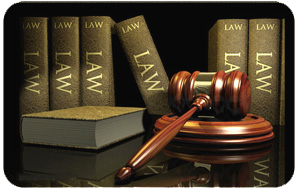
Answers to these questions come from four primary schools of thought in general jurisprudence:
1. Natural law is the idea that there are rational objective limits to the power of legislative rulers. The foundations of law are accessible through human reason and it is from these laws of nature that human created laws gain whatever force they have.
2. Legal Positivism, by contrast to natural law, holds that there is no necessary connection between law and morality and that the force of law comes from some basic social facts although positivists differ on what those facts are.
3. Legal Realism is a third theory of jurisprudence which argues that the real world practice of law is what determines what law is; the law has the force that it does because of what legislators, judges, and executives do with it. Similar approaches have been developed in many different ways in Sociology of law.
4. Critical Legal Studies is a younger theory of jurisprudence that has developed since the 1970s which is primarily a negative thesis that the law is largely contradictory and can be best analyzed as an expression of the policy goals of the dominant social group.
Also of note is the work of the contemporary Philosopher of Law Ronald Dworkin who has advocated a constructivist theory of jurisprudence that can be characterized as a middle path between natural law theories and positivist theories of general jurisprudence.
The English term is based on the Latin word jurisprudentia: juris is the genitive form of jus meaning "law", and prudentia means "knowledge". The word is first attested in English in 1628, at a time when the word prudence had the now obsolete meaning of "knowledge of or skill in a matter". The word may have come via the French jurisprudence, which is attested earlier.
History of Jurisprudence
Jurisprudence already had this meaning in Ancient Rome even if at its origins the discipline was a (periti) in the jus of mos maiorum (traditional law), a body of oral laws and customs verbally transmitted "by father to son". Praetors established a workable body of laws by judging whether or not singular cases were capable of being prosecuted either by the edicta, the annual pronunciation of prosecutable offense, or in extraordinary situations, additions made to the edicta. An iudex then would judge a remedy according to the facts of the case.
Their sentences were supposed to be simple interpretations of the traditional customs, but effectively it was an activity that, apart from formally reconsidering for each case what precisely was traditionally in the legal habits, soon turned also to a more equitable interpretation, coherently adapting the law to the newer social instances. The law was then implemented with new evolutiveInstitutiones (legal concepts), while remaining in the traditional scheme. Praetors were replaced in 3rd century BC by a laical body of prudentes. Admission to this body was conditional upon proof of competence or experience.
In ancient Indian vedic society, the law or Dharma, as followed by Hindus was interpreted by use of "Manu Smrti" - a set of poems which defined sin and the remedies. They were said to be written between 200 BC - 200 AD. In fact, these were not codes of law but norms related to social obligations and ritual requirements of the era.
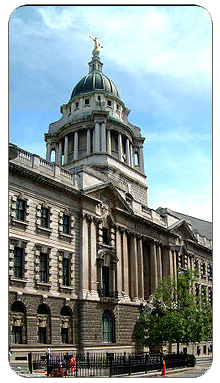
Under the Roman Empire, schools of law were created, and the activity constantly became more academic. In the age from the early Roman Empire to the 3rd century, a relevant literature was produced by some notable groups including the Proculians and Sabinians.The scientific depth of the studies was unprecedented in ancient times.
After the 3rd century, Juris prudentia became a more bureaucratic activity, with few notable authors. It was during the Eastern Roman Empire (5th century) that legal studies were once again undertaken in depth, and it is from this cultural movement that Justinian's Corpus Juris Civilis was born.
Natural Law
Natural law theory asserts that there are laws that are immanent in nature, to which enacted laws should correspond as closely as possible. This view is frequently summarised by the maxim an unjust law is not a true law , lex iniusta non est lex, in which 'unjust' is defined as contrary to natural law. Natural law is closely associated with morality and, in historically influential versions, with the intentions of God. To oversimplify its concepts somewhat, natural law theory attempts to identify a moral compass to guide the lawmaking power of the state and to promote 'the good'. Notions of an objective moral order, external to human legal systems, underlie natural law. What is right or wrong can vary according to the interests one is focused upon. Natural law is sometimes identified with the maxim that "an unjust law is no law at all", but as John Finnis, the most important of modern natural lawyers has argued, this maxim is a poor guide to the classical Thomist position.
1) Aristotle
Aristotle is often said to be the father of natural law Like his philosophical forefathers, Socrates and Plato, Aristotle posited the existence of natural justice or natural right. His association with natural law is due largely to the interpretation given to him by Thomas Aquinas This was based on Aquinas' conflation of natural law and natural right, the latter of which Aristotle posits in Book V of the Nicomachean Ethics (= Book IV of the Eudemian Ethics). Aquinas's influence was such as to affect a number of early translations of these passages though more recent translations render them more literally.
Aristotle's theory of justice is bound up in his idea of the golden mean. Indeed his treatment of what he calls "political justice" derives from his discussion of "the just" as a moral virtue derived as the mean between opposing vices, just like every other virtue he describes. His longest discussion of his theory of justice occurs in Nicomachean Ethics and begins by asking what sort of mean a just act is. He argues that the term "justice" actually refers to two different but related ideas: general justice and particular justice. When a person's actions are completely virtuous in all matters in relation to others, Aristotle calls her "just" in the sense of "general justice;" as such this idea of justice is more or less coextensive with virtue"Particular" or "Partial justice", by contrast, is the part of "general justice" or the individual virtue that is concerned with treating others equitably Aristotle moves from this unqualified discussion of justice to a qualified view of political justice, by which he means something close to the subject of modern jurisprudence. Of political justice, Aristotle argues that it is partly derived from nature and partly a matter of convention. This can be taken as a statement that is similar to the views of modern natural law theorists. But it must also be remembered that Aristotle is describing a view of morality, not a system of law, and therefore his remarks as to nature here are about the grounding of the morality enacted as law not the laws themselves. The passage here is silent as to that question.
The best evidence of Aristotle's having thought there was a natural law comes from the Rhetoric, where Aristotle notes that, aside from the "particular" laws that each people has set up for itself, there is a "common" law that is according to nature. The context of this remark, however, suggests only that Aristotle advised that it could be rhetorically advantageous to appeal to such a law, especially when the "particular" law of ones' own city was adverse to the case being made, not that there actually was such a law; Aristotle, moreover, considered two of the three candidates for a universally valid, natural law suggested in this passage to be wrong. Aristotle's theoretical paternity of the natural law tradition is consequently disputed.
2) Sharia and Fiqh in Islam
Sharia refers to the body of Islamic law. The term means "way" or "path"; it is the legal framework within which public and most private aspects of life are regulated for those living in a legal system based on Islamic principles of jurisprudence. Fiqh is the term for Islamic jurisprudence, made up of the rulings of Islamic jurists. A component of Islamic studies, Fiqh expounds the methodology by which Islamic law is derived from primary and secondary sources.

Mainstream Islam distinguish fiqh, which means understanding details and inferences drawn by scholars, from sharia that refers to principles that lie behind the fiqh. Scholars hope that fiqh andsharia are in harmony in any given case, but this cannot be assured.
Early forms of logic in Islamic philosophy were introduced in Islamic jurisprudence from the 7th century with the process of Qiyas. During the Islamic Golden Age, there was a logical debate among Islamic philosophers and jurists whether the term Qiyas refers to analogical reasoning,inductive reasoning or categorical syllogism. Some Islamic scholars argued that Qiyas refers to reasoning, which Ibn Hazm (994-1064) disagreed with, arguing that Qiyas does not refer to inductive reasoning, but refers to categorical syllogism in a real sense and analogical reasoning in a metaphorical sense. On the other hand, al-Ghazali (1058–1111) (and in modern times, Abu Muhammad Asem al-Maqdisi) argued that Qiyas refers to analogical reasoning in a real sense and categorical syllogism in a metaphorical sense. Other Islamic scholars at the time, however, argued that the term Qiyas refers to both analogical reasoning and categorical syllogism in a real sense.
3) Thomas Aquinas
Saint Thomas Aquinas [Thomas of Aquin, or Aquino] (c. 1225 – 7 March 1274) was a philosopher and theologian in the scholastic tradition, known as "Doctor Angelicus, Doctor Universalis". He is the foremost classical proponent of natural theology, and the father of the Thomistic school of philosophy, for a long time the primary philosophical approach of the Roman Catholic Church. The work for which he is best-known is the Summa Theologica. One of the thirty-three Doctors of the Church, he is considered by many Catholics to be the Church's greatest theologian. Consequently, many institutions of learning have been named after him.

Aquinas distinguished four kinds of law: eternal, natural, human and divine. Eternal law refers to divine reason, known only to God, God's plan for the universe; man needs this, without which he would totally lack direction. Natural law is the human "participation" in the eternal law in rational creatures and is discovered by reason. Divine law is revealed in the scriptures and is Gods positive law for mankind. Human law is supported by reason and enacted for the common good. Natural law, of course, is based on "first principles":
This is the first precept of the law, that good is to be done and promoted, and evil is to be avoided. All other precepts of the natural law are based on this . . . The desires to live and to procreate are counted by Aquinas among those basic (natural) human values on which all other human values are based.
4. Thomas Hobbes
In his treatise Leviathan, (1651), Hobbes expresses a view of natural law as a precept, or general rule, found out by reason, by which a man is forbidden to do that which is destructive of his life, or takes away the means of preserving the same; and to omit that by which he thinks it may best be preserved. Hobbes was a social contractarian and believed that the law gained peoples' tacit consent. He believed that society was formed from a state of nature to protect people from the state of war between mankind that exists otherwise. Life is, without an ordered society, "solitary, poor, nasty, brutish and short". It is commonly commented that Hobbes' views about the core of human nature were influenced by his times. The English Civil War and the Cromwellian dictatorship had taken place, and he felt absolute authority vested in a monarch, whose subjects obeyed the law, was the basis of a civilized society.
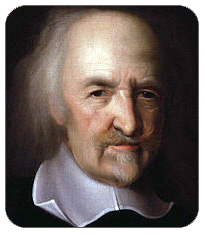
5. Lon Fuller
Writing after World War II, Lon L. Fuller notably emphasised that the law must meet certain formal requirements (such as being impartial and publicly knowable). To the extent that an institutional system of social control falls short of these requirements, Fuller argues, we are less inclined to recognise it as a system of law, or to give it our respect. Thus, law has an internal morality that goes beyond the social rules by which valid laws are made. Fuller and scholar H. L. A. Hart were colleagues at Harvard University. One of the disagreements between Fuller, a natural lawyer, and Hart, a positivist, was whether Nazi law was so bad that it could no longer be considered law.
6. John Finnis
Sophisticated positivist and natural law theories sometimes resemble each other more than the above descriptions might suggest, and they may concede certain points to the other "side". Identifying a particular theorist as a positivist or a natural law theorist sometimes involves matters of emphasis and degree, and the particular influences on the theorist's work. In particular, the older natural lawyers, such as Aquinas and John Locke made no distinction between analytic and normative jurisprudence. But modern natural lawyers, such as John Finnis claim to be positivists, while still arguing that law is a basically moral creature.
Analytic Jurisprudence
Analytic, or 'clarificatory', jurisprudence means the use of a neutral point of view and descriptive language when referring to the aspects of legal systems. This was a philosophical development that rejected natural law's fusing of what law is and what it ought to be.David Hume famously argued in A Treatise of Human Nature that people invariably slip between describing that the world is a certain way to saying therefore we ought to conclude on a particular course of action. But as a matter of pure logic, one cannot conclude that we ought to do something merely because something is the case. So analysing and clarifying the way the world is must be treated as a strictly separate question to normative and evaluative ought questions.
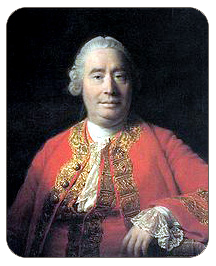
The most important questions of analytic jurisprudence are: "What are laws?"; "What is the law?"; "What is the relationship between law and power/sociology?” and "What is the relationship between law and morality?" Legal positivism is the dominant theory, although there are a growing number of critics, who offer their own interpretations.
1) Legal positivists:
Positivism simply means that law is something that is "posited": laws are validly made in accordance with socially accepted rules. The positivist view on law can be seen to cover two broad principles: Firstly, that laws may seek to enforce justice, morality, or any other normative end, but their success or failure in doing so does not determine their validity. Provided a law is properly formed, in accordance with the rules recognized in the society concerned, it is a valid law, regardless of whether it is just by some other standard. Secondly, that law is nothing more than a set of rules to provide order and governance of society. No legal positivist, however, argues that it follows that the law is therefore to be obeyed, no matter what. This is seen as a separate question entirely.
What the law is - is determined by historical social practice (resulting in rules)
What the law ought to be" - is determined by moral considerations.
A) Bentham and Austin :
One of the earliest legal positivists was Jeremy Bentham. Bentham was a
n early and staunch supporter of the utilitarian concept (along with Hume), an avid prison reformer, advocate for democracy, and strongly atheist. Bentham's views about law and jurisprudence were popularized by his student, John Austin. Austin was the first chair of law at the new University of London from 1829. Austin's utilitarian answer to "what is law?" was that law is "commands, backed by threat of sanctions, from a sovereign, to whom people have a habit of obedience". Contemporary legal positivists have long abandoned this view, and have criticised its oversimplification, H. L. A. Hart particularly.
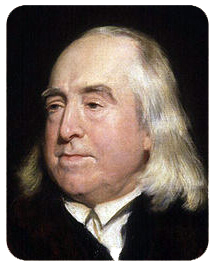
B) Hans Kelsen :
Hans Kelsen is considered one of the preeminent jurists of the 20th century and has been highly influential in Europe and Latin America, although less so in common-law countries. His Pure Theory of Law aims to describe law as binding norms while at the same time refusing, itself, to evaluate those norms. That is, 'legal science' is to be separated from 'legal politics'. Central to the Pure Theory of Law is the notion of a 'basic norm (Grundnorm)' - a hypothetical norm, presupposed by the jurist, from which in a hierarchy all 'lower' norms in a legal system, beginning with constitutional law, are understood to derive their authority or 'bindingness'. In this way, Kelsen contends, the bindingness of legal norms, their specifically 'legal' character, can be understood without tracing it ultimately to some suprahuman source such as God, personified Nature or - of great importance in his time - a personified State or Nation.
C) H. L. A. Hart :
In the Anglophone world, the pivotal writer was H. L. A. Hart, who argued that the law should be understood as a system of social rules. Hart rejected Kelsen's views that sanctions were essential to law and that a normative social phenomenon, like law, cannot be grounded in non-normative social facts. Hart revived analytical jurisprudence as an important theoretical debate in the twentieth century through his book The Concept of Law.As the professor of jurisprudence at Oxford University, Hart argued that law is a 'system of rules'.
Rules, said Hart, are divided into primary rules (rules of conduct) and secondary rules (rules addressed to officials to administer primary rules). Secondary rules are divided into rules of adjudication (to resolve legal disputes), rules of change (allowing laws to be varied) and the rule of recognition (allowing laws to be identified as valid). The "rule of recognition", a customary practice of the officials (especially judges) that identifies certain acts and decisions as sources of law. A pivotal book on Hart was written by Neil MacCormick in 1981 (second edition due in 2007), which further refined and offered some important criticisms that led MacCormick to develop his own theory (the best example of which is his recently published Institutions of Law, 2007). Other important critiques have included that of Ronald Dworkin, John Finnis, and Joseph Raz.
In recent years, debates about the nature of law have become increasingly fine-grained. One important debate is within legal positivism. One school is sometimes called exclusive legal positivism, and it is associated with the view that the legal validity of a norm can never depend on its moral correctness. A second school is labeled inclusive legal positivism, a major proponent of which is Wil Waluchow, and it is associated with the view that moral considerations may determine the legal validity of a norm, but that it is not necessary that this is the case.
D) Joseph Raz :
Some philosophers used to contend that positivism was the theory that there is "no necessary connection" between law and morality; but influential contemporary positivists, including Joseph Raz, John Gardner, and Leslie Green, reject that view. As Raz points out, it is a necessary truth that there are vices that a legal system cannot possibly have (for example, it cannot commit rape or murder).
Joseph Raz defends the positivist outlook, but criticised Hart's "soft social thesis" approach in The Authority of Law. Raz argues that law is authority, identifiable purely through social sources, without reference to moral reasoning. Any categorisation of rules beyond their role as authoritative is best left to sociology, rather than jurisprudence.
2) Ronald Dworkin:
In his book Law's Empire Dworkin attacked Hart and the positivists for their refusal to treat law as a moral issue. Dworkin argues that law is an 'interpretive' concept that requires judges to find the best fitting and most just solution to a legal dispute, given their constitutional traditions. According to him, law is not entirely based on social facts, but includes the morally best justification for the institutional facts and practices that we intuitively regard as legal. It follows on Dworkin's view that one cannot know whether a society has a legal system in force, or what any of its laws are, until one knows some moral truths about the justifications for the practices in that society. It is consistent with Dworkin's view—in contrast with the views of legal positivists or legal realists—that *no one* in a society may know what its laws are (because no one may know the best justification for its practices.
Interpretation, according to Dworkin's law as integrity theory, has two dimensions. To count as an interpretation, the reading of a text must meet the criterion of fit. But of those interpretations that fit, Dworkin maintains that the correct interpretation is the one that puts the political practices of the community in their best light, or makes of them the best that they can be. But many writers have doubted whether there is a single best justification for the complex practices of any given community, and others have doubted whether, even if there are, they should be counted as part of the law of that community.
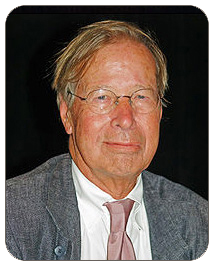
3) Legal Realism:
Legal realism was a view popular with some Scandinavian and American writers. Skeptical in tone, it held that the law should be understood and determined by the actual practices of courts, law offices, and police stations, rather than as the rules and doctrines set forth in statutes or learned treatises. It had some affinities with the sociology of law. The essential tenet of legal realism is that all law is made by human beings and, thus, is subject to human foibles, frailties and imperfections.
It has become quite common today to identify Justice Oliver Wendell Holmes, Jr., as the main precursor of American Legal Realism (other influences include Roscoe Pound, Karl Llewellyn and Justice Benjamin Cardozo). Karl Llewellyn, another founder of the U.S. legal realism movement, similarly believed that the law is little more than putty in the hands of a judge who is able to shape the outcome of a case based on personal biasesThe chief inspiration for Scandinavian legal realism many consider to be the works of Axel Hägerström. Despite its decline in facial popularity, realists continue to influence a wide spectrum of jurisprudential schools today, including critical legal studies (scholars such as Duncan Kennedy and Roberto Unger), feminist legal theory,critical race theory, sociology of law and law and economics.
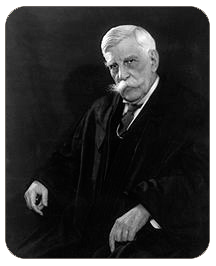
4) The Historical School:
Historical jurisprudence came to prominence during the German debate over the proposed codification of German law. In his book On the Vocation of Our Age for Legislation and Jurisprudence, Friedrich Carl von Savigny argued that Germany did not have a legal language that would support codification because the traditions, customs and beliefs of the German people did not include a belief in a code. The Historicists believe that the law originates with society.
Normative Jurisprudence
In addition to the question, "What is law?", legal philosophy is also concerned with normative, or "evaluative" theories of law. What is the goal or purpose of law? What moral or political theories provide a foundation for the law? What is the proper function of law? What sorts of acts should be subject to punishment, and what sorts of punishment should be permitted? What is justice? What rights do we have? Is there a duty to obey the law? What value has the rule of law? Some of the different schools and leading thinkers are as follows.
1) Virtue Jurisprudence:
Aretaic moral theories such as contemporary virtue ethics emphasize the role of character in morality. Virtue jurisprudence is the view that the laws should promote the development of virtuous characters by citizens. Historically, this approach is associated mainly with Aristotle or Thomas Aquinas later. Contemporary virtue jurisprudence is inspired by philosophical work on virtue ethics.
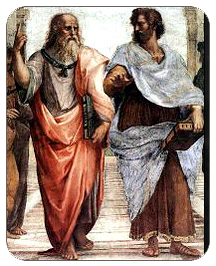
2) Deontology :
Deontology is "the theory of duty or moral obligation.
"The philosopher Immanuel Kant formulated one influential deontological theory of law. He argued that any rule we follow must be universalisable: we must be willing to will everyone to follow that rule. A contemporary deontological approach can be found in the work of the legal philosopher Ronald Dworkin.
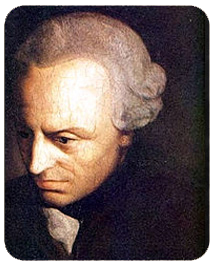
3) Utilitarianism :
Utilitarianism is the view that the laws should be crafted so as to produce the best consequences for the greatest number of people possible. Historically, utilitarian thinking about law is associated with the great philosopher, Jeremy Bentham. John Stuart Mill was a pupil of Bentham's and was the torch bearer for utilitarian philosophy through the late nineteenth century. In contemporary legal theory, the utilitarian approach is frequently championed by scholars who work in the law and economics tradition. Also see Lysander Spooner.
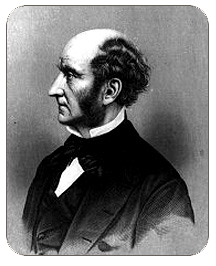
4) John Rawls :
John Rawls was an American philosopher, a professor of political philosophy at Harvard University and author of A Theory of Justice (1971), Political Liberalism, Justice as Fairness: A Restatement, andThe Law of Peoples. He is widely considered one of the most important English-language political philosophers of the 20th century. His theory of justice uses a device called the original position to ask us which principles of justice we would choose to regulate the basic institutions of our society if we were behind a 'veil of ignorance.' Imagine we do not know who we are - our race, sex, wealth status, class, or any distinguishing feature - so that we would not be biased in our own favour. Rawls argues from this 'original position' that we would choose exactly the same political liberties for everyone, like freedom of speech, the right to vote and so on. Also, we would choose a system where there is only inequality because that produces incentives enough for the economic well-being of all society, especially the poorest. This is Rawls's famous 'difference principle'. Justice is fairness, in the sense that the fairness of the original position of choice guarantees the fairness of the principles chosen in that position.
There are many other normative approaches to the philosophy of law, including critical legal studies and libertarian theories of law.
After Effects of Divorce on Child
Introduction
Divorce, in most of the times thwarts the family and shatters the loyalty by and between the family members. The worst affected victims are the children, who see the family disintegrating. Parental conflicts leading to divorce shatters the children both psychologically and emotionally. Along with this, the parent-child relationship also ruptures. The quantity and quality of contact between the non custodial parent and the child tend to decrease. Even the custodial parent, at times, starts brainwashing the child with ill vibes against the non custodial parent.
Outside the realm of family, children face difficulties in actually being accepted by a conservative society like ours. From the context of socio economic attainments, children who have seen their parents getting divorced are reported to have received lower educational prospects than children from intact homes Children start thinking what they have done that they have to see divorce between their parents. They become restless, develop irritability, loss of patience and become prone to premarital cohabitation. Studies start to take a backseat and eventuality the holistic growth of the child starts to detoriating. There are also children who are left in a guilty conscious in the post divorce period especially if they are a frequent witness to the parent’s feuds
Other Aspects of Divorce
Step Families: After divorce, the child may prove to be obstinate in adjusting to the new family. It is not sure, how the new family in a conservative society like India will accept the child. Such uncertainty not only affects the psychological temperament of the child but also increases the odds viz, reckless lifestyle, too much independency, possibility of living in relationship leading to premarital cohabitation and the odds of premarital pregnancies.
Financial considerations: Once the parents get separated, the non custodial parent (in case he is a father) starts non co-operating with the custodial parent (in case she is a mother). Even after maintenance decree is awarded, it is seen, the non custodial parent delays making payments. Such delay tactis goes to such an extensive level, that the mother, even has to file execution cases for realisation of the dues. Financial problems are more catastrophic and it prejudices the career of the child including child’s daily care, schooling, education etc. Child support payments when not paid put a lot of pressure on the custodial parent. The non custodial parent uses such lacunas as a defence and/or an alibi for establishing that the mother is not an eligible parent for custody. Out of such ego, the best interest of the child gets affected.
Child’s Rights
Parents are usually considered to be the protectors of their own child. But when they start to separate, it becomes increasingly difficult to understand as to how the child’s rights would be protected. Amidst of parental conflict, it is also seen how one parent, out of his personal grudge, even attempt to divorce the rights of his child. The concept of rights presents special difficulty because of the conflicting interests and rights of the parents and child.
It is imperative that we are aware about the legislations that seek to protect the rights of the child. Article 39(f) of the Constitution of India lays down the responsibility of the State to frame a policy for securing the children. Article 15(3) and Article 51A also says it shall be the duty of every citizen who is a parent or a guardian to provide opportunities for children to his child or as the case may be, between six and fourteen years. The Convention on Rights of the Child also directs both the parents and the State to take all appropriate measures to ensure that the child is protected from all forms of discrimination due to status of parents. Despite the strong infringement on a child’s interests, the law currently does not consider children to be affected parties except in the issues regarding custody. Apart from the personal legislations that are enacted for child custody and/or visitation, we do not have a comprehensive code to treat the child rights or accord them with a special status before the society at large.
Child’s Rights involved in custody cases
Most of the divorce proceedings are followed by prolonged conflicts over the custody of their child. Amidst of such legal battles, the parents forget that the children is not a chattel but a human being. At court, the parents start to teach the child to be detached from the other party. It has been settled by now, in deciding the custody cases, the welfare and wellbeing of the child will follow. With time, the court has also valued the wishes of the child. In a leading case , custody was granted to grandparents based on the wishes of the child.
Another shortcoming is that, in a divorce-custody dispute, neither the parents actually represent the interests of the child. Both the parties frame points as per their prayers using the child as a tool to accomplish their desires. Often, it has been argued, the child’s interests are protected by the Court as parents patriae. Practically speaking, within the rigors of adversary proceedings, I am of the opinion, unless a separate representation for the child is made, the court may overlook the interests of the child. I would welcome if someone in the form of guardian ad litem is engaged by any court of law, whose principal duty will be to assist the court to determine the best interests of the child. Counselling should be encouraged at the beginning of the case so as to discourage the case to go to the level of evidence.
Other Statutory provisions
Issues of custody and guardianship under the Hindu law are governed by the Hindu Minority and Guardianship Act, 1956. Guardianship in communities other than Hindus and Muslim is governed by Guardians and Wards Act, 1890. Under Mohammedan law, the father is the sole guardian of the child and the mother has the primary right to custody. Shia School says the mother’s right to custody terminates when the boy reaches two years. Under Hanafi School, this right is extended till 7 years.
Suggestions
With the breakdown of joint family and with the upsurge of technology, social cites and mobile apps, divorce has started to rise. The laws in India are different than that of western nations. The Americans have stressed that parents should be encouraged to take their custody decisions privately between themselves. In India, it is left within the jurisdiction of the Courts. In England, the defences of “parental authority” are no longer justified for State intervention. The Children Act, 1989 in England address the core issue of the rights of a child in divorce proceedings. In India, there is no comprehensive legislation with regard to rights of the children.
Attitudes towards divorce in the west unlike India with regard to divorce and custody of child have become more acceptable and as such no stigmatization is attached to the members when they are brought into a new family. In India, the process of divorce is vigorously stigmatised.
Children involved in parental divorce are to be dealt with heart and wisdom. Parents must interact with their children and try to understand the child as to why they are separating. That will help the child to maintain trust upon their parents. I would also recommend the parents to keep the conflicts within them and not to involve the child into their ongoing conflicts. Interaction and communication with the non custodial parent should be encouraged by the custodial parent.
Keeping the child in the same school, neighbourhood after divorce will be good for the child. Minimum number of transitions should be encouraged after divorce so that the psychological stability of the child is not uprooted.
Conclusions
The State should enact laws for enumerating the parameters of best interests of the child and not leave everything upon the judiciary. A single codified law governing child rights specifically for divorce cases, and matters pertaining to custody and maintenance must be enacted. In America they have successfully framed uniform laws. In 1970, American National Conference on Uniform State Laws had adopted the Uniform Marriage and Divorce Act.
In case the parent fails to pay maintenance at the appropriate time, penalty should be awarded. Likewise, if the parent fails to look after the child with care and responsibility; adequately penalty must be given. Committees should be constituted who would see the maintenance awarded towards maintenance of child is not misused.
1) Andrea Diekmann and Kart Schmidheiny, The Intergenerational Trans Mission of Divorce, Page 951.
2) Watson, The Children of Armageddon: Problems of Custody After Divorce, 21 Syracuse Law Review, Pg 55, 78 (1969)
3) J. Roche, The Children Act, 1989, Journal of Social Welfare and Family Law, Pg: 345-61.
4) Article 2(1) of the Convention.
5) Balancing Children’s Rights into the Divorce Decision, 13 Vermont Law Review, 531 (1989)
6) V. Meenapursha –Vs- V. Ananthan Jayakumar, AIR 2004, Mad 1
